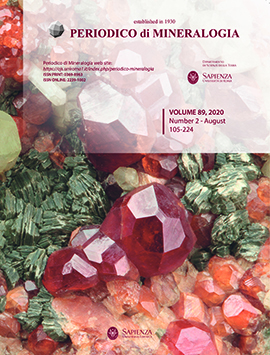Origin of Lower Paleozoic S-type magmatism in a northern terrane of Gondwana (Central Iran): Geochemical and isotopic approach
Keywords:
Gondwana, Iran, granite, geochemistry, oxygen isotopeAbstract
In the center of Iran, Central-East Iranian Microcontinent (CEIM) was a part of Gondwana supercontinent in pre-Palaeozoic during Pan-African Orogeny. It is a zone of several tectonomagmatic and metamorphic episodes from Neoproterozoic to earliest Palaeozoic. In the north of CEIM, Airekan granite is a relic of Paleozoic magmatism in northern Gondwanaland. It is potentially a significance pluton that preserved the magmatic/metamorphic evolution of the active continental margin of the vanished Ocean of Proto-Tethys. This pluton is characterized by SiO2> 70 wt%, A/CNK>1, Rb >~160 ppm, Y <50 ppm, Th <30 ppm, Th/Ta >5. The δ18O value of quartz (average ~11.86 ‰; n=8), calculated δ18O value of whole rock (average ~10.75 ‰), absence of hornblende, presence of biotite, muscovite and inherited zircon, higher content of orthoclase, and microgranular granitic enclaves are all consistent with it being a continental collision-related peraluminous S-type granite. Th+U versus 206Pb/238U ratios of zircons correlate with decreasing crystallization temperatures related to the Cambrian-Ordovician magmatic events preserved in the inherited and magmatic zircons, toward their Devonian metamorphic overgrowth occurred via Caledonian Orogeny. It is probably formed by mica-dehydration melting at ~ 690-820 °C/ 10-15 kbar, and it is geochronologically and geochemically comparable with other Gondwanan collision-related granitic plutons (along north of Africa, Turkey, Iran to Himalaya).


